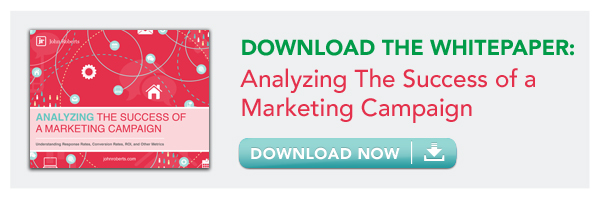September 28, 2015 at 11:52 AM
The Stealth Practice of “Un-Marketing” to Millennials

As marketers, we’ve really met our match in the Millennials. They’re hard to reach, and they have the innate ability to completely tune out conventional marketing methods. In fact, a current study of Millennials by SocialChorus1 uncovered some horrifying statistics for marketers:
- Only 6% think online advertising is credible
- 67% never click on sponsored stories
- 95% see friends as their most believable source for product information
We also know they skip commercials, skim content, multitask and have short attention spans. Their attention is limited, of course, because they are inundated with content—consuming more than 8 hours of content per day, according to a recent study by ZenithOptimedia.2 So how can marketers break through the noise and get noticed?
The objective is to get to Millennials by implementing strategies that are almost imperceptible as marketing. In essence, marketing by “un-marketing.” I’ve been studying Millennial marketing trends and principles for quite some time now, and in my research I’ve picked up on several stealth tactics that make a lot of sense once you understand what Millennials respond to. Here are some millennial un-marketing strategies to think about, and the reasons why they can work.
Send Personalized Print
If you look at the 8+ hours of content consumed each day, the vast majority of the content is through digital media—online, television, podcasts, smartphones, social media, etc. In the crowded digital media environment, print has a tremendous advantage. It exists. Millennials see print as the quiet among the noise, as something to take their time with and enjoy. Marketers who can provide personalized printed content that gives them what they want when they want it can hit a home run with Millennials. Take advantage of the tangible qualities of print with value-added print effects, texture, paper and quality writing and imagery tailored to their interests.
Are you skeptical of the fact that digital natives actually crave print? Look at the current trends with Millennials that involve tangible experiences, like subscription boxes, vinyl records, niche magazines and fanzines, Pinterest crafts and artisanal food and beverages. Millennials are actively searching for sensory experiences, and in study after study, have indicated that they value print, enjoy reading (real) books and magazines, and appreciate mail.
Add a Human Touch
Another marketing trend is the humanization of a brand. The popularity of this technique is due to Millennials’ reliance on friends for information (as we saw in the statistic above) and the desire to see people like themselves, rather than a corporation, when considering a brand. You will see this technique in almost every marketing medium:
- In a catalog, the models might have names and interests/accomplishments next to their photos.
- In an email blast for a clothing company, the lead designer may provide her favorite picks for the season.
- In a store, “staff favorites” sit in their own designated section. “If everyone who works here likes the product, maybe I will, too.”
Create a Lifestyle
Somewhat related to the human touch is the lifestyle side of un-marketing. For example, think of the old Williams-Sonoma catalog. It used to be a catalog filled with stunning kitchen appliances and tools. The Williams-Sonoma catalog of today sells a lifestyle—recipes and entertaining tips and stories from world-class chefs—and all of the premium tools and products to help you emulate that lifestyle. Williams-Sonoma complements the catalog with a blog, an entire recipe section of their site, interviews with featured chefs, and lines of ingredients and products that customers can use to create the exotic dishes featured in their online and print content. Look around and you’ll see lifestyle integrated everywhere.
Be An Expert / Be Inspiring
Content marketing is definitely the name of the game these days, and the creation of shareable content is a stealth way to get discovered. In B2B scenarios, it’s hard to get much traction in social media. After all, who’s going to actively follow a manufacturer or distributor? Instead, leverage your knowledge in your area of expertise to answer questions, provide tips and tricks and powerful thought leadership. The blog post then leads back to your company and allows for discovery. According to Google, about 70 percent of B2B decision-makers today begin their product research through a generic online search. Post frequently, share other good content and comment in group discussions, too. Millennials like authenticity and transparency. If you’re sharing your knowledge and helping them, they’ll be open to learning more about you.
On the B2C side, aspirational imagery and quotes, tips, lifestyle ideas and humor all resonate and give your brand a personality.
Support a Cause
Millennials (heart) companies with a heart, which has led to the explosive growth of cause marketing. For-profit companies who partner with non-profit companies to do good things for the environment and for humanity can win huge points with Millennials. In fact, over 85% of Millennials correlate their purchasing decisions to the responsible efforts a company is making (SquareSpace).
Now, remember, un-marketing is under the radar and I’m not suggesting that every company that engages in cause marketing does it just for good PR. There are many, many companies that do good because it’s in their company culture, which is awesome. However if we’re looking at this solely for its strategic value, what makes cause marketing so effective is that your company gets discovered through the good work it’s doing. A positive impression is made, and a brand is elevated in the eyes of the customer. Everybody wins.
The key is to make sure that what you do correlates with the cause you’re supporting or the customer will forget about it. For example, Warby Parker makes eyeglasses, and they have a “Buy a Pair Give a Pair” program that helps people who need glasses and eye care get the help they need. It makes sense. If Warby Parker donated to green energy programs instead, the correlation would be lost.
Go stealth in 2016
So, as you’re planning for your 2016 marketing, think about some of these techniques, and the different ways you can begin to implement them into your schedule. Although some of these strategies are less direct and measurable than more traditional forms of marketing, they can lay a foundation that will accumulate and become truly useful across multiple platforms.
1Millennials as Brand Advocates: What You Need to Know to Engage the Most Important Consumer Generation (2013) SocialChorus
2The Pursuit of Happiness: Creating Meaningful Brand Experiences for Millennials (2015) ZenithOptimedia
Popular Posts

Memorial Weekend

Landing Pages
Learn Why Omnichannel Marketing is Trending

Direct Mail





